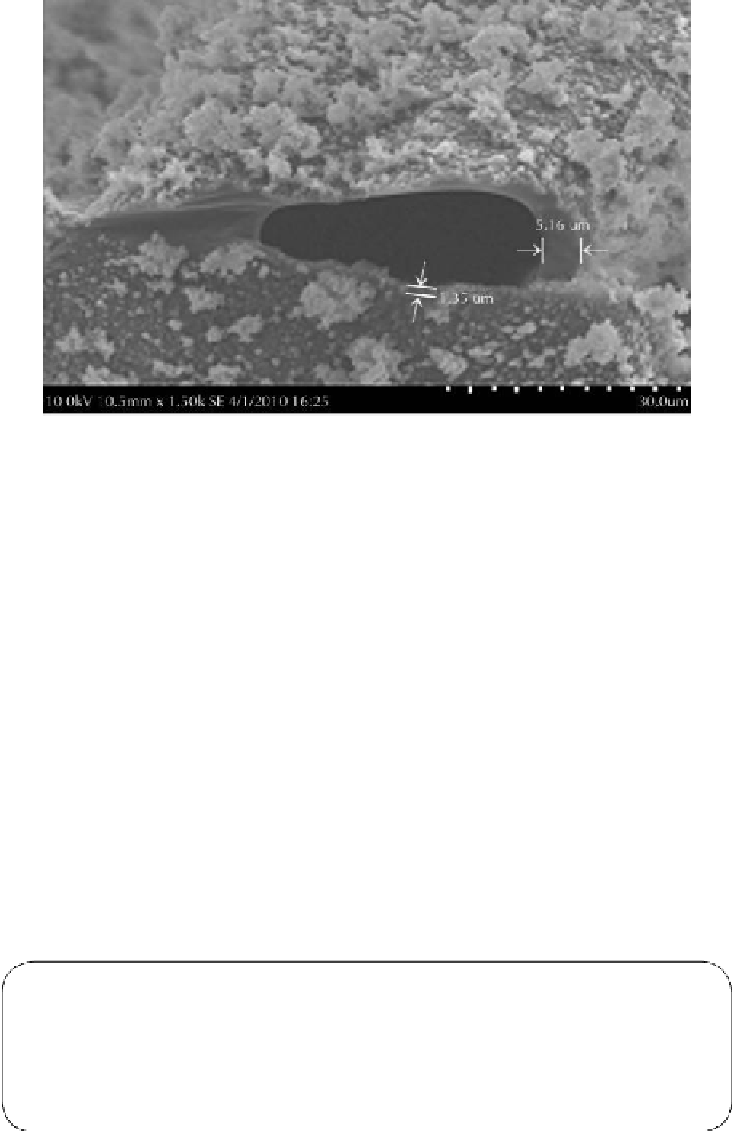Biomedical Engineering Reference
In-Depth Information
Figure 6.
Shell wall morphology of a ruptured microcapsule.
Some microcapsules were ruptured with a razor blade to allow for viewing of the
inner shell wall morphology. Figure 6 shows the shell wall morphology comprising of
two distinct regions of thin continuous inner shell wall and rough exterior shell wall.
The thickness of UF shell wall was found as 5.16 µm. Continuous inner shell wall
is formed due to reaction between urea and formaldehyde in aqueous phase and rough
exterior is formed as colloidal UF particle coalesce and deposits along interface.
CoNClusioN
Alkyd resin along with solvent has been successfully encapsulated inside UF shell
by
In situ
encapsulation technique. The SEM analysis shows that microcapsules were
comprised of a thin continuous shell wall and a rough exterior shell wall. The FTIR
spectra of original and soxhlet extracted resin proves the encapsulation of alkyd resin
inside the shell. Moreover DSC and TGA analysis shows that the microcapsules con-
tain both resin-solvent mixture as core and UF as shell material. These microcapsules
incorporated in paints or coatings release the healing material when scratched which
in turn heals the scratches and cracks.
KeyWords
•
deionised water
•
morphology
•
octoate
•
Polyvinyl alcohol
•
urea-formaldehyde


Search WWH ::

Custom Search